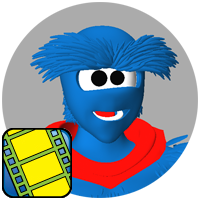
|
History of Digital comics
|
|
Chronology 1985-1990:
|
|
Chronology 1991-2000:
|
|
Tech specs regarding the production of the The Black Diamond Effect comic books: The comic books production mimics more closely to that of animation techniques. Generated 3D characters and graphics, scanned and enhanced line art, all get enhanced with additional digital painting. The software used in 1990 was; Quark Xpress, Adobe Illustrator, Adobe Photoshop, and Swivel 3D. As the years progress, the 3 core programs continued to be used, but the 3D programs changed. Swivel 3D, then Strata Studio Pro and Infini-D. After the digital production is completed, the manipulation of the artwork continues on the printers end of the production, the actual linescreen of the covers were controlled to such a degree, that you end up with 2 to 3 different linescreens on the same page. The total assest count of each book tops an image library of over 500 elements. While everyone at the time was struggling with bitmapped graphics on the page... 90 percent of the graphics in TBDE are VECTOR based. This makes it possible to make creative changes at any stage of production, even at the printers. This technique is common in todays book market, but George Peter Gatsis has been and developed these techniques in art college between the years of 1986 to 1989 and put them to full use in the production of his comic books in 1990. A video example of this long time un-altered production process can be viewed by clicking here. Additional: The comic books have always been available for immediate download, right after they have been distributed into the market at http://www.theblackdiamondeffect.com/ This has been the longest on-going duo-distribution ( print and web ) by any comicbook publisher. |






